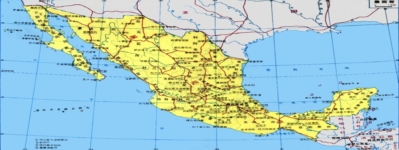The Evolution of Fish Harvesting Techniques Through History 11-2025
1. Introduction: Understanding Fish Harvesting and Its Significance
Fish harvesting, the practice of capturing aquatic life for food, trade, and recreation, has been a cornerstone of human survival and cultural development for thousands of years. It represents more than just a means to satisfy nutritional needs; it reflects the ingenuity and adaptability of societies across epochs. From primitive spears to sophisticated sonar systems, fish harvesting methods reveal the technological and cultural evolution of civilizations.
Throughout history, fish harvesting has played a vital role in shaping economies and societies. Coastal communities depended on fishing not only as sustenance but also as a primary economic activity, fostering trade routes and cultural exchanges. Today, modern fishing techniques continue to influence global markets, exemplified by industries generating billions of dollars annually, underscoring the enduring importance of this practice.
Contents
2. Early Fish Harvesting Methods: From Ancient Times to the Dawn of Technology
Primitive Techniques and Natural Features
Ancient humans relied on simple yet effective methods to catch fish, including spears, traps, and nets made from natural fibers. These tools were designed based on an understanding of local aquatic environments. For example, early fishermen would position traps in rivers or along coastlines, leveraging natural features such as rocks, vegetation, or underwater structures to ensnare fish.
In coastal regions, fishing often involved exploiting natural phenomena. Ancient Egyptians, for instance, practiced an intriguing method involving trained cormorants approximately 3000 years ago. These birds, trained to dive and retrieve fish, exemplify an early form of animal-assisted fishing, demonstrating the cultural significance and innovation in ancient fishing practices.
Cultural Practices and Early Innovations
Different civilizations developed unique techniques suited to their environments. The Chinese, for example, used bamboo traps and intricate netting systems, while indigenous peoples in North America employed fish weirs—structures built across rivers to channel fish into nets or traps. Such innovations not only increased catch efficiency but also reflected cultural traditions passed down through generations.
3. Technological Advancements in Fish Harvesting
From Manual Methods to Mechanical Devices
The advent of mechanical devices marked a turning point in fishing history. The transition from hand-held spears and simple traps to mechanical gear such as hand-operated nets and lines increased harvest amounts and efficiency. Innovations like the trawl net—introduced in the 17th century—enabled fishermen to capture larger quantities of fish with less effort, laying groundwork for modern commercial fishing.
Development of Boats and Impact on Fishing Reach
The evolution of boats—from small rowboats to larger sailboats—expanded fishing zones beyond coastal areas. The development of the dhow, a traditional sailing vessel, allowed fishermen to venture further into the open sea. The introduction of the motorized boat in the 20th century further revolutionized fishing, enabling rapid movement and access to distant fishing grounds, significantly boosting catch capacity.
Introduction of Fishing Gear
Modern fishing gear includes diverse equipment such as gillnets, purse seines, and longlines. These tools are designed for specific fish species and environments, exemplifying the ongoing refinement of harvesting techniques. For instance, purse seines are highly efficient for schooling fish like sardines and herring, illustrating how gear innovation directly impacts fishing productivity.
4. The Industrial Revolution and Modernization of Fishing Techniques
Mechanization and Large-Scale Fishing
The Industrial Revolution introduced significant mechanization to fishing, transitioning from sail-powered vessels to steam-powered ships. This shift enabled fishermen to stay at sea longer and cover greater distances, leading to the rise of large-scale commercial fishing operations. Countries with advanced shipbuilding industries, like the United States and Norway, became leaders in industrial fishing, drastically increasing global fish harvests.
Environmental Impacts of Commercial Fishing
While mechanization boosted productivity, it also caused environmental challenges. Overfishing became a global concern, with fish stocks declining in many regions. Bycatch—the unintended capture of non-target species—also increased, threatening marine biodiversity. These issues prompted the development of regulations and international agreements aimed at sustainable fishing practices.
Regulatory and Sustainability Concerns
Modern fisheries are governed by complex regulations designed to prevent overexploitation. Quotas, protected areas, and gear restrictions aim to balance economic benefits with ecological health. The implementation of Marine Stewardship Council standards and other certifications reflects a growing commitment to sustainability in industrial fishing.
5. Contemporary Fish Harvesting Technologies and Trends
Use of Sonar, GPS, and Automation
Modern fishermen leverage advanced technology such as sonar to locate schools of fish precisely. GPS systems enable navigation and route optimization, reducing fuel consumption and increasing efficiency. Automation, including remotely operated vessels and robotic nets, further enhances catch rates while reducing labor costs.
Sustainable Fishing Practices and Eco-Friendly Innovations
Growing environmental awareness has led to innovations like selective gear that minimizes bycatch and the development of quotas based on scientific assessments. Technologies such as real-time stock monitoring and electronic reporting facilitate responsible management, aiming to preserve fish populations for future generations.
Economic Significance of Modern Fishing
The fishing industry now involves large-scale tournaments and competitions, with prizes exceeding $300 million annually. These events not only promote recreational fishing but also stimulate local economies and tourism, exemplifying the integration of tradition and modern enterprise. For instance, in recreational contexts, platforms like fish prizes up to 500 highlight the popularity and economic impact of fishing as entertainment.
6. Fishin’ Frenzy and Modern Recreational Fishing
Modern recreational fishing exemplifies the application of current techniques and technologies. From high-tech rods and reels to digital fish finders, enthusiasts enjoy a connection to a long history of innovation. The popularity of fishing tournaments and televised competitions reflects a cultural integration that celebrates skill, technology, and tradition.
Platforms like fish prizes up to 500 demonstrate how entertainment continues to influence modern fishing culture, blending recreational pleasure with technological advancements rooted in centuries of innovation.
7. Non-Obvious Perspectives: Cultural, Environmental, and Economic Dimensions
Cultural Significance and Traditional Methods
Traditional fishing techniques embody cultural identities across civilizations. Indigenous groups, such as the Inuit with their umiak boats or Pacific Islanders with their vaka vessels, demonstrate how boat design and fishing methods are intertwined with cultural heritage. These practices often include spiritual rituals and community cooperation, emphasizing the social importance of fishing beyond mere sustenance.
Environmental Challenges
Overfishing, bycatch, and habitat destruction threaten marine ecosystems. The decline of cod stocks in the North Atlantic or the collapse of certain tuna populations exemplifies the consequences of unsustainable practices. Addressing these issues requires integrated management approaches, including technology-driven solutions like satellite monitoring and eco-friendly gear.
Economic Impacts and Global Markets
From small vessels, sometimes as short as 3 meters, serving local communities, to vast industrial fleets, fishing remains a significant economic activity. The global seafood trade is valued at hundreds of billions of dollars, impacting employment and food security worldwide. Innovations continue to evolve, balancing economic growth with ecological responsibility.
8. Future Directions in Fish Harvesting Techniques
Innovations and Autonomous Systems
Future fish harvesting may rely heavily on autonomous vessels equipped with AI and sensor technology to minimize human intervention. These systems could adapt to changing environmental conditions, optimize routes, and select sustainable fishing zones, thus reducing ecological footprint.
Impacts on Communities and Ecosystems
While technological progress offers efficiency, it also risks marginalizing small-scale fishers if access to advanced systems becomes restricted. Ensuring equitable technology distribution and establishing robust sustainability policies are vital for preserving both livelihoods and marine health.
Balancing Innovation and Sustainability
The key to future success lies in harmonizing technological advancements with environmental stewardship. Innovations such as biodegradable gear, real-time ecosystem monitoring, and community-led management initiatives can help maintain aquatic resources for generations to come.
9. Conclusion: The Ongoing Journey of Fish Harvesting Innovation
Historically, fish harvesting has evolved from primitive methods rooted in survival to sophisticated technological systems. Each milestone reflects human ingenuity and changing environmental and societal needs. Understanding this progression helps us appreciate the importance of responsible fishing practices today.
“Balancing technological progress with ecological sustainability is essential to ensure that future generations can enjoy the bounty of our oceans.” – Marine Conservation Expert
As we look ahead, embracing innovations that prioritize sustainability while maintaining efficiency will be crucial. Just as ancient civilizations adapted their fishing techniques to their environments, modern society must continue to innovate responsibly, ensuring the health of aquatic ecosystems and the livelihoods they support.









